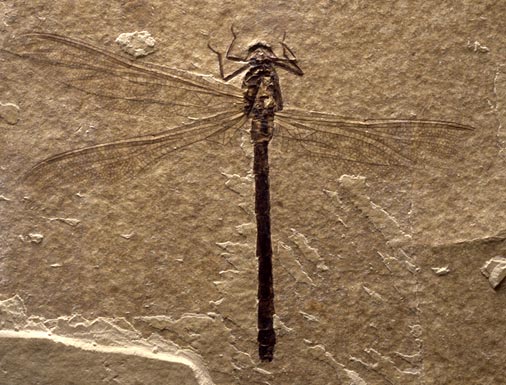Microraptor's World

Dragonfly
Aeschnidium
The tissue-thin membranes of this dragonfly's wings
are so immaculately preserved that it's easy to picture the insect
skimming along the surface of a lake at dusk 130 million years ago. Perhaps the
toxic gas of a volcanic eruption suffocated it, and a fine coating of volcanic
ash protected its fragile remains. Unlike their comparatively colossal ancient
forbears, which had wingspans stretching over two feet, dragonflies of the
Early Cretaceous were similar in size and anatomy to those flying through
wetlands today.